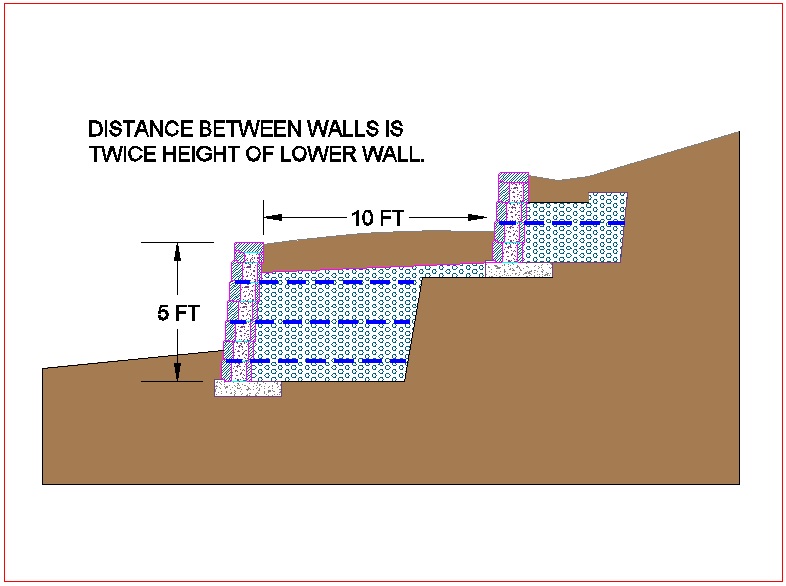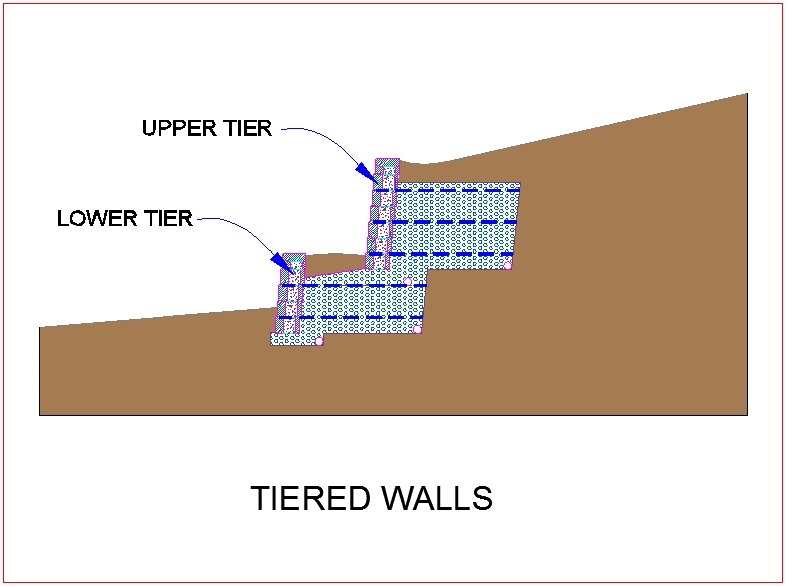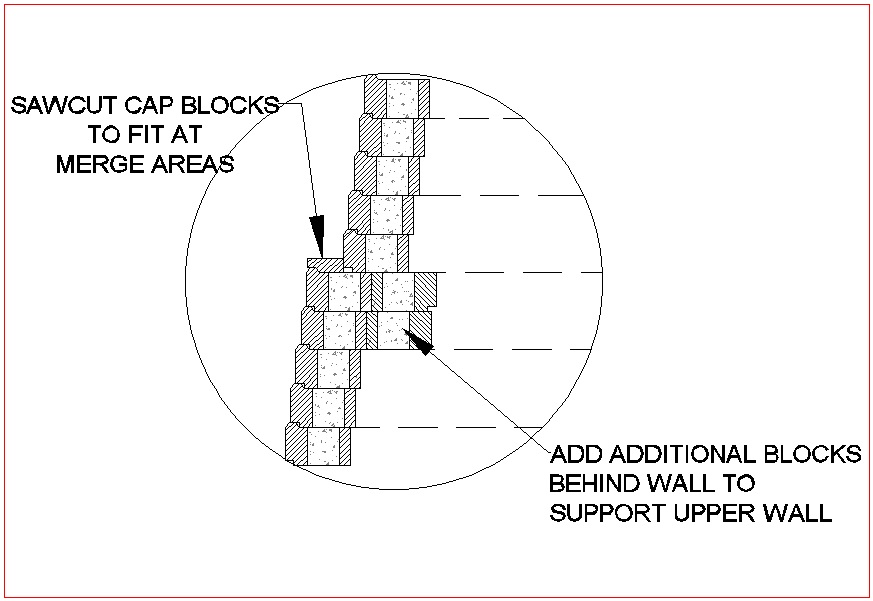Tiered Retaining Walls
0When one retaining wall is constructed above another retaining wall, the two walls together are called a Tiered Wall System. Tiered walls look like this:
- How far apart are the walls?
- How high are the walls?
- Are they really two separate, independent walls?
- Do the two tiers of wall join and become one (merged) wall?
Distance Between Tiers:
Extra loads on a retaining wall are called surcharges. Retaining wall contractors understand that as the Upper Wall gets closer to the Lower Wall there is more load (more surcharge) put on the Lower Wall. If the Upper Wall is far away, then there is less load (less surcharge) put on the Lower Wall.
Question: How far away must the Upper Wall be so that it will not surcharge the Lower Wall? Answer: Take the height of the Lower Wall and double that number. That is how far away the Upper Wall must be to apply little to no surcharge on the Lower Wall. For example, if the Lower Wall is five (5) feet high, then the Upper Wall must be at least 10 feet back from the Lower Wall so it won’t overload the Lower Wall. (This assumes that the Lower Wall is taller than the Upper Wall.) See this drawing:

Joseph Kowalski, P.E.
www.RetainingWallNetwork.com
Current State PE Registrations
*National Concrete Masonry Association, Design Manual for Segmental Retaining Walls, Third Edition, Fifth Printing, 2010, Copyright NCMA, Herndon, VA.

